 "ttyymmnn" (ttyymmnn)
"ttyymmnn" (ttyymmnn)
09/21/2018 at 12:05 • Filed to: car quiz
 0
0
 40
40
 "ttyymmnn" (ttyymmnn)
"ttyymmnn" (ttyymmnn)
09/21/2018 at 12:05 • Filed to: car quiz |  0 0
|  40 40 |
I think this one may be a bit harder than yesterday’s, though there is one apparently distinctive feature that could help. Interestingly, a car by this manufactu rer had a role in a very important film. If somebody comes up with the car, I’ll let you know about the film, unless somebody comes up with all of it.
Update: RamblinRover has been working hard at it, but he hasn’t cracked the case yet. So here’s a hint: Beach Boys.
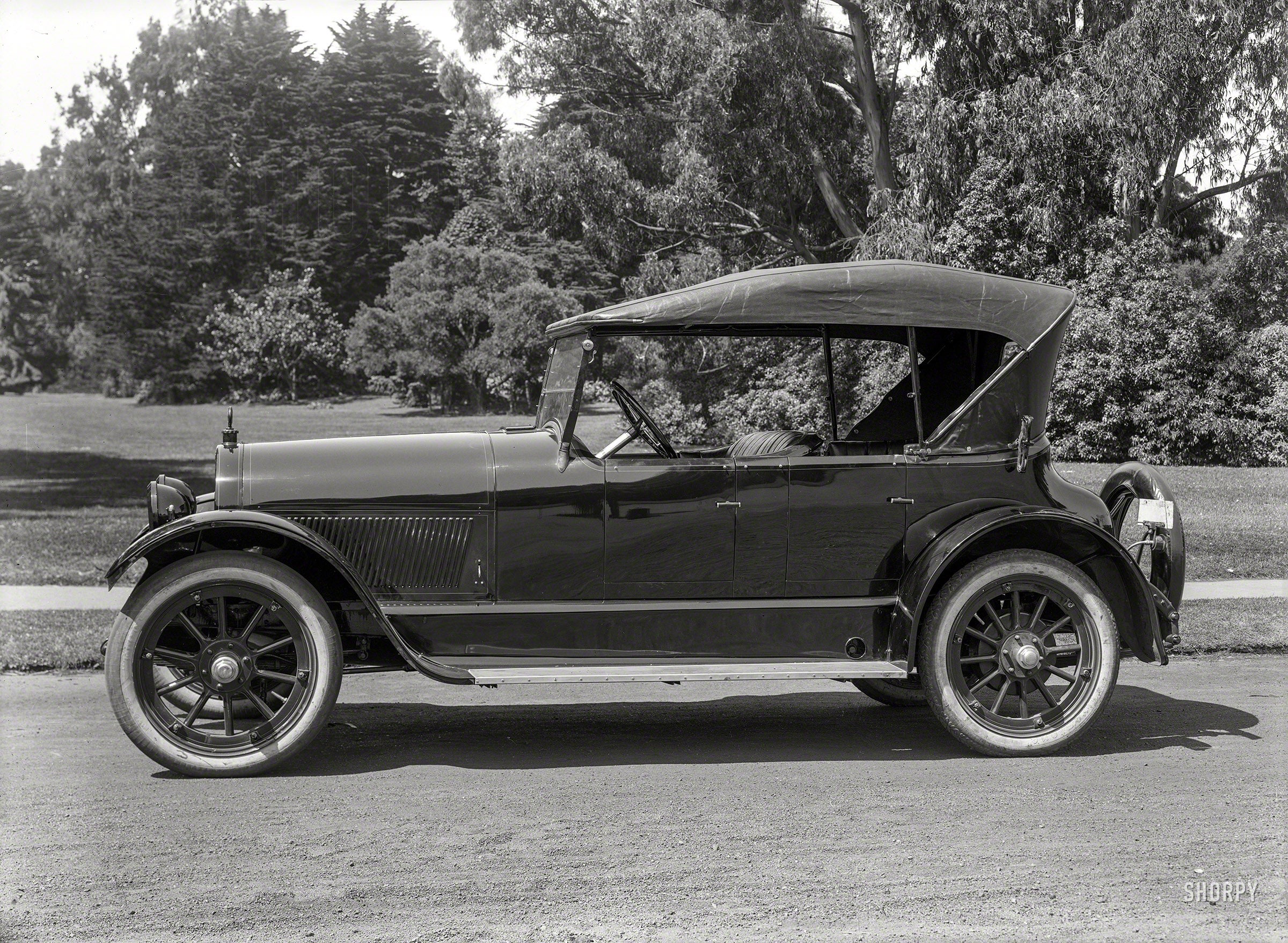
Note: I have blurred out the manufacturer’s name on the hubcaps. If you want to see the full-size picture, click on the photo to enlarge it, then right-click and open it in a new tab or window.
Winner : I’m not sure if the winner is RamblinRover or fintail, so they get a share of the prize purse.
This is a Haynes “Fourdore” Roadster. Haynes built cars in Kokomo, Indiana from 1905-1924. The marque holds a place in movie history because a 1912 Haynes 50-60 Model Y Touring Car appeared in the 1915 film !!!error: Indecipherable SUB-paragraph formatting!!! ( also known as A Grass Sandwich ), the earliest extant hardcore pornographic movie shot in the US.
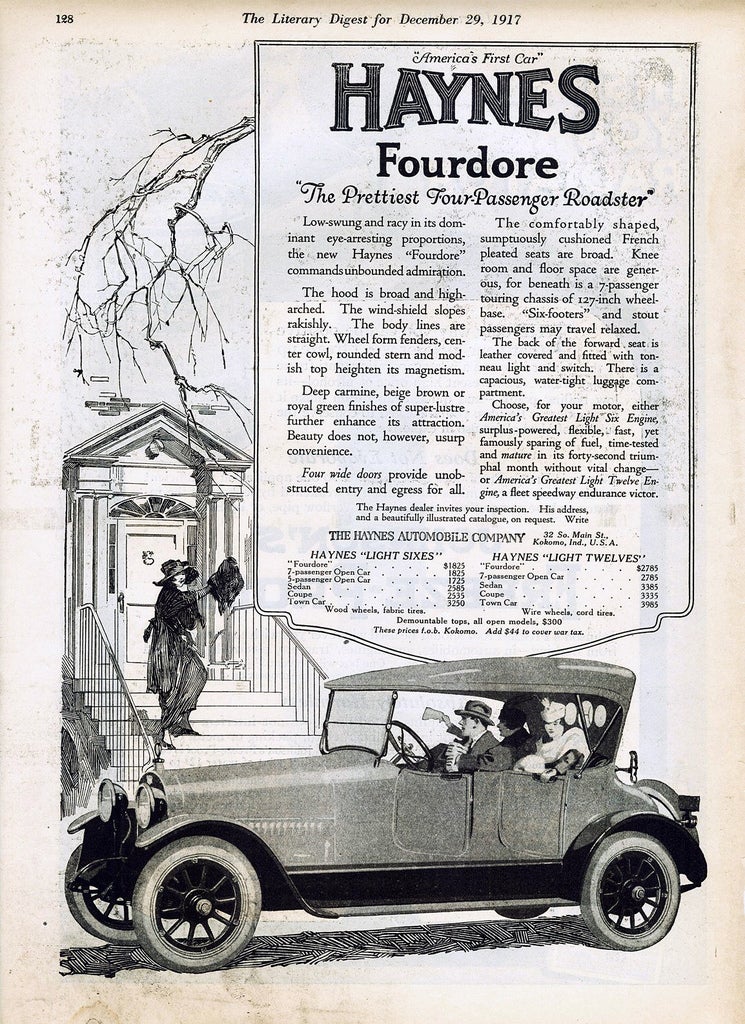
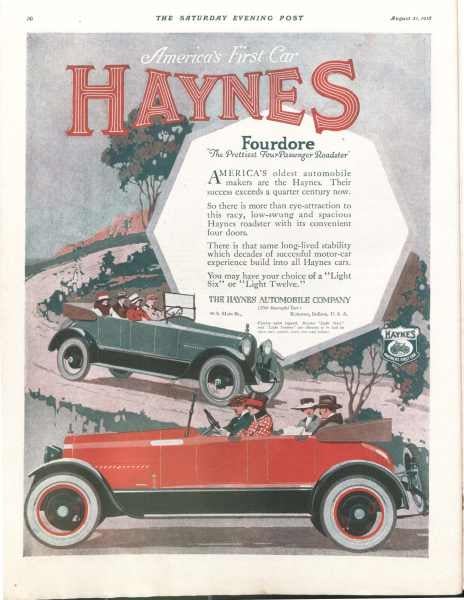
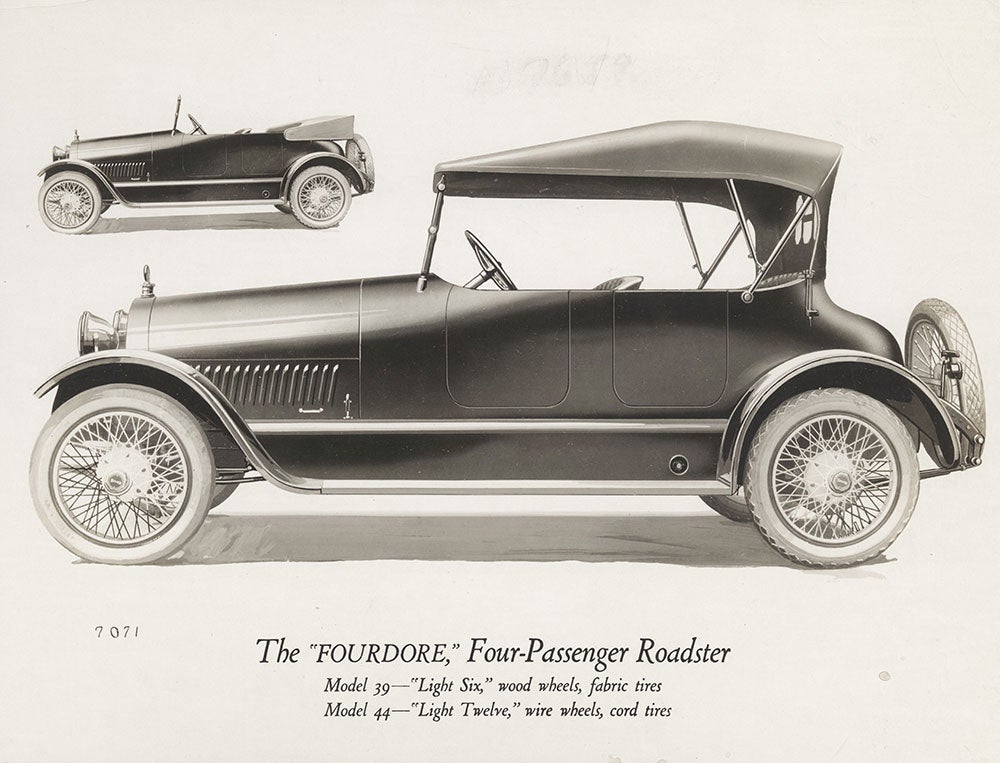
 RamblinRover Luxury-Yacht
> ttyymmnn
RamblinRover Luxury-Yacht
> ttyymmnn
09/21/2018 at 10:58 |
|
there is one apparently distinctive feature that could help
The louver pattern and extent of the top hood sheet down the sides is very unusual, but I haven’t nailed it down
yet. There is likely something else you were thinking of, though.
 facw
> ttyymmnn
facw
> ttyymmnn
09/21/2018 at 11:01 |
|
A spare tire that’s just a spare tire (and maybe a tube), but doesn’t have a wheel seems like a huge pain in the ass.
 ttyymmnn
> RamblinRover Luxury-Yacht
ttyymmnn
> RamblinRover Luxury-Yacht
09/21/2018 at 11:02 |
|
There is.
 RamblinRover Luxury-Yacht
> ttyymmnn
RamblinRover Luxury-Yacht
> ttyymmnn
09/21/2018 at 11:08 |
|
It’s not a Climber, is it?
 ttyymmnn
> RamblinRover Luxury-Yacht
ttyymmnn
> RamblinRover Luxury-Yacht
09/21/2018 at 11:11 |
|
Nope. The distinctive feature I’m talking about is the “baby bump” on the back end.
 RamblinRover Luxury-Yacht
> ttyymmnn
RamblinRover Luxury-Yacht
> ttyymmnn
09/21/2018 at 11:18 |
|
Unusual, but not unheard of. In that same category, the greasing access hole through the running board side.
 RamblinRover Luxury-Yacht
> RamblinRover Luxury-Yacht
RamblinRover Luxury-Yacht
> RamblinRover Luxury-Yacht
09/21/2018 at 11:19 |
|
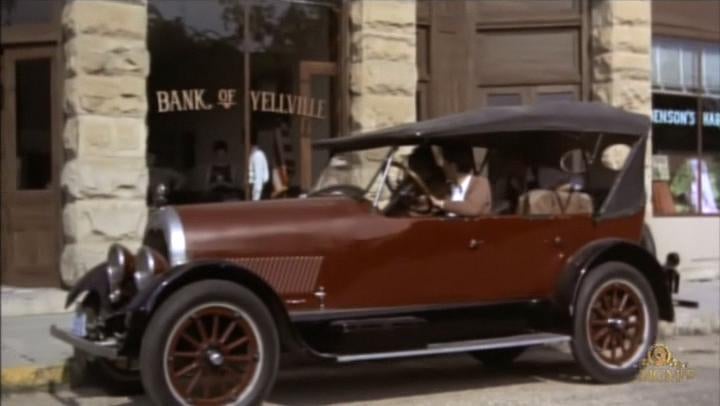
You can see why I considered the Climber.
 ttyymmnn
> RamblinRover Luxury-Yacht
ttyymmnn
> RamblinRover Luxury-Yacht
09/21/2018 at 11:21 |
|
Who manufactured the Climber?
 RamblinRover Luxury-Yacht
> ttyymmnn
RamblinRover Luxury-Yacht
> ttyymmnn
09/21/2018 at 11:26 |
|
https://en.wikipedia.org/wiki/Climber_Motor_Company
See also:
https://www.imcdb.org/v692018.html
 ttyymmnn
> RamblinRover Luxury-Yacht
ttyymmnn
> RamblinRover Luxury-Yacht
09/21/2018 at 11:43 |
|
I updated the post with a hint.
 fintail
> ttyymmnn
fintail
> ttyymmnn
09/21/2018 at 11:50 |
|
When I viewed the bigly image, I could see a big hint, so I won’t say more :)
 RamblinRover Luxury-Yacht
> ttyymmnn
RamblinRover Luxury-Yacht
> ttyymmnn
09/21/2018 at 11:53 |
|
The louvers are nearly a perfect match to a Hayn es of 1919, but pretty sure it isn’t.
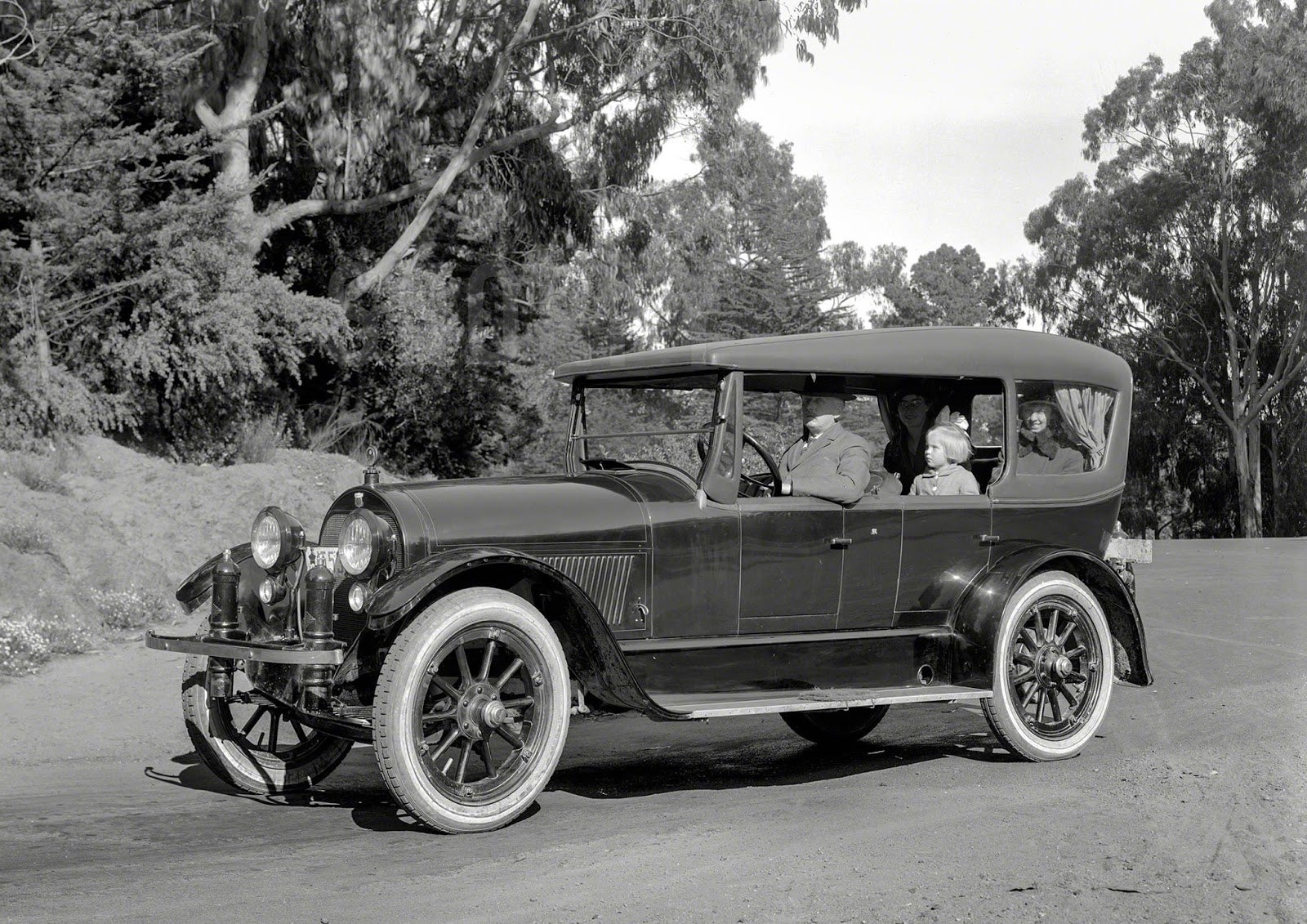
Or is it?
 ttyymmnn
> RamblinRover Luxury-Yacht
ttyymmnn
> RamblinRover Luxury-Yacht
09/21/2018 at 11:54 |
|
It is!
 ttyymmnn
> fintail
ttyymmnn
> fintail
09/21/2018 at 11:55 |
|
Tell me what you think it is, and you’ll be the winner, since you came in a couple of minutes ahead of RamblinRover.
 RamblinRover Luxury-Yacht
> ttyymmnn
RamblinRover Luxury-Yacht
> ttyymmnn
09/21/2018 at 11:57 |
|
Haynes made several very sexy cars:
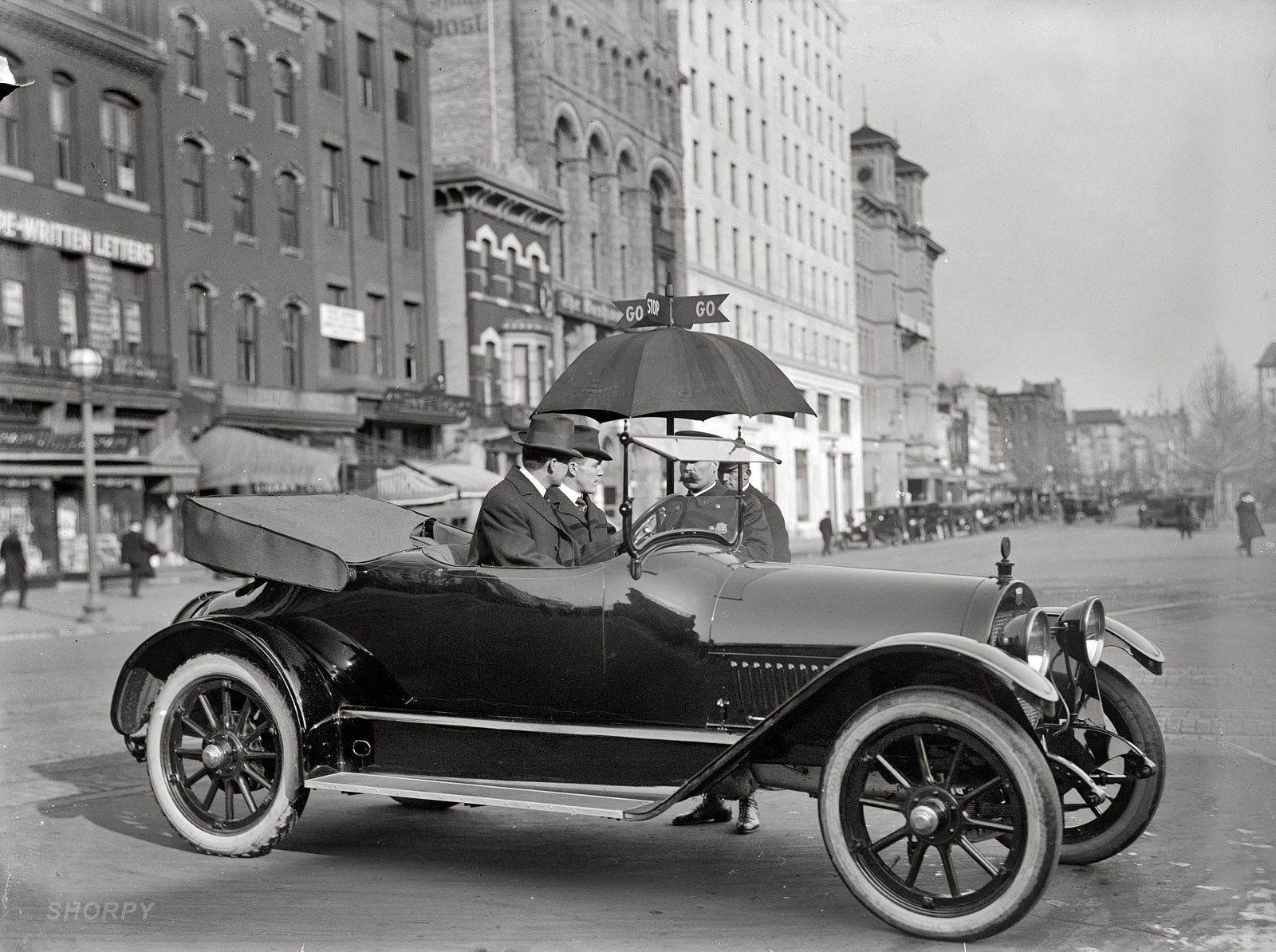
 RamblinRover Luxury-Yacht
> facw
RamblinRover Luxury-Yacht
> facw
09/21/2018 at 12:04 |
|
It reflects a time in which you could get a relatively light tire on and off with a prybar (which everybody had), and top up with a bicycle pump (which more people had, as cars were fewer, roads sucked, and people had to rely on bikes). Also, the tires were small, so they filled fast with a hand pump.
In contrast, most cars had combined wheel and hub, so swapping the wheel would mean getting greasy as well as dirty. I don’t think modern bolt-on/off wheel practice was a thing except for the few manufacturers of heavy duty vehicles and some carmakers with steel disc wheels.
I bet a ~1920 car can have the tire swapped in not that much more time than a modern change by somebody who knows what they’re doing... or works in a bike shop.
 facw
> RamblinRover Luxury-Yacht
facw
> RamblinRover Luxury-Yacht
09/21/2018 at 12:08 |
|
I mean it’s true that I can take off the tire on my bike, swap in a tube, and put it back on without too much difficulty, but then I don’t exactly have room for a spare tire, let alone a spare wheel.
 ttyymmnn
> RamblinRover Luxury-Yacht
ttyymmnn
> RamblinRover Luxury-Yacht
09/21/2018 at 12:10 |
|
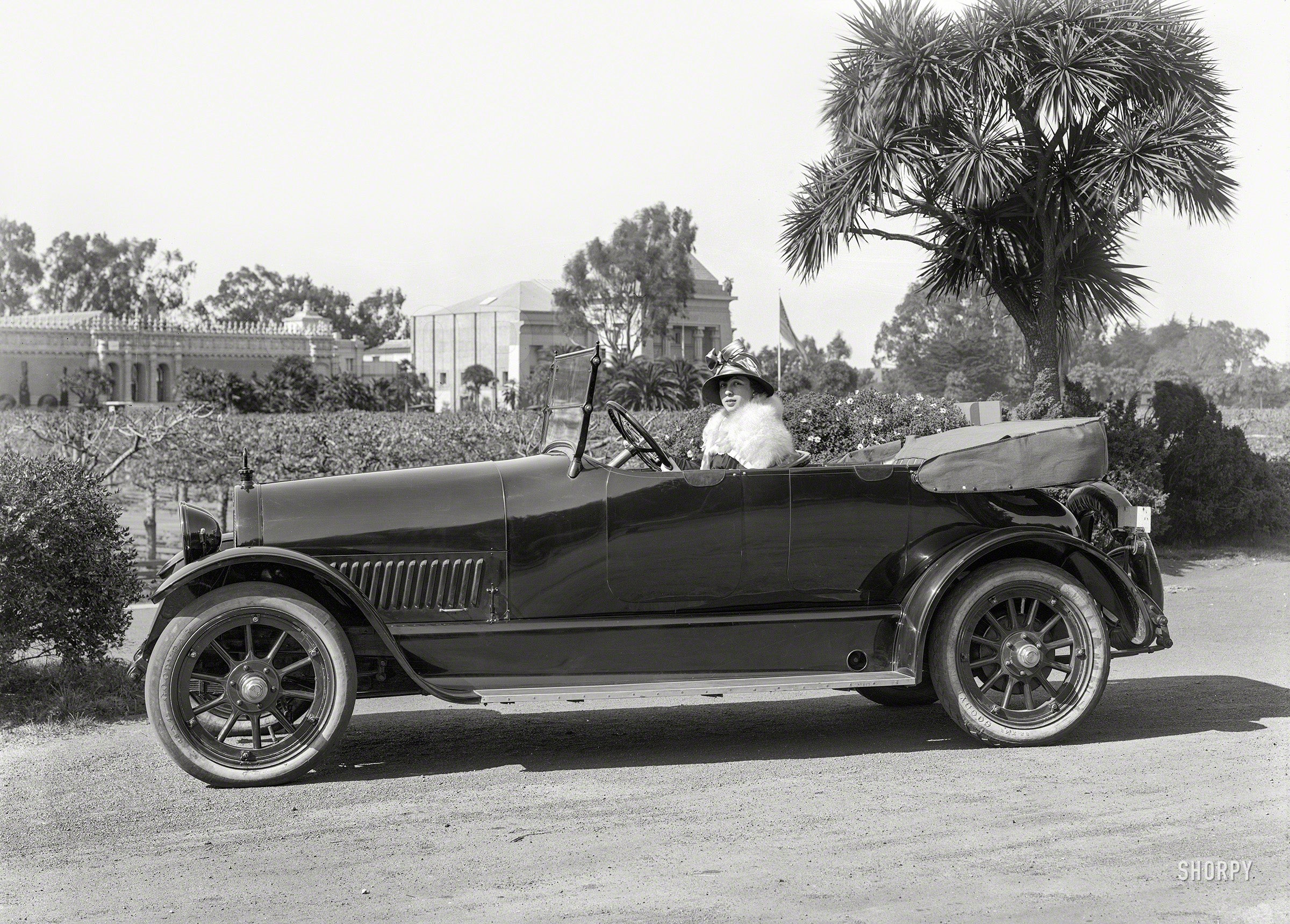
Indeed.
 Chariotoflove
> ttyymmnn
Chariotoflove
> ttyymmnn
09/21/2018 at 12:18 |
|
Fun fact: when the Beach Boys wrote Kokomo, they didn’t know there was a real town called that. They thought they’d just made it up.
 RamblinRover Luxury-Yacht
> ttyymmnn
RamblinRover Luxury-Yacht
> ttyymmnn
09/21/2018 at 12:19 |
|
One thing I realized while I was trying to ID brands by the louver pattern is that the Templar had no hood louvers. None. This is something so extremely odd that I will file it away, along with the Maltese Cross logo in relief on the radiator, so that I will never fail to identify one if I see it.
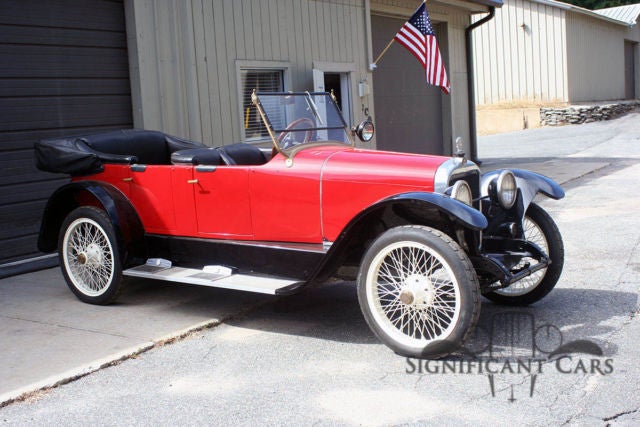
 ttyymmnn
> Chariotoflove
ttyymmnn
> Chariotoflove
09/21/2018 at 12:21 |
|

I did not know that.
 RamblinRover Luxury-Yacht
> ttyymmnn
RamblinRover Luxury-Yacht
> ttyymmnn
09/21/2018 at 12:21 |
|
Also, earlier Haynes models share a close resemblance to the Cole:
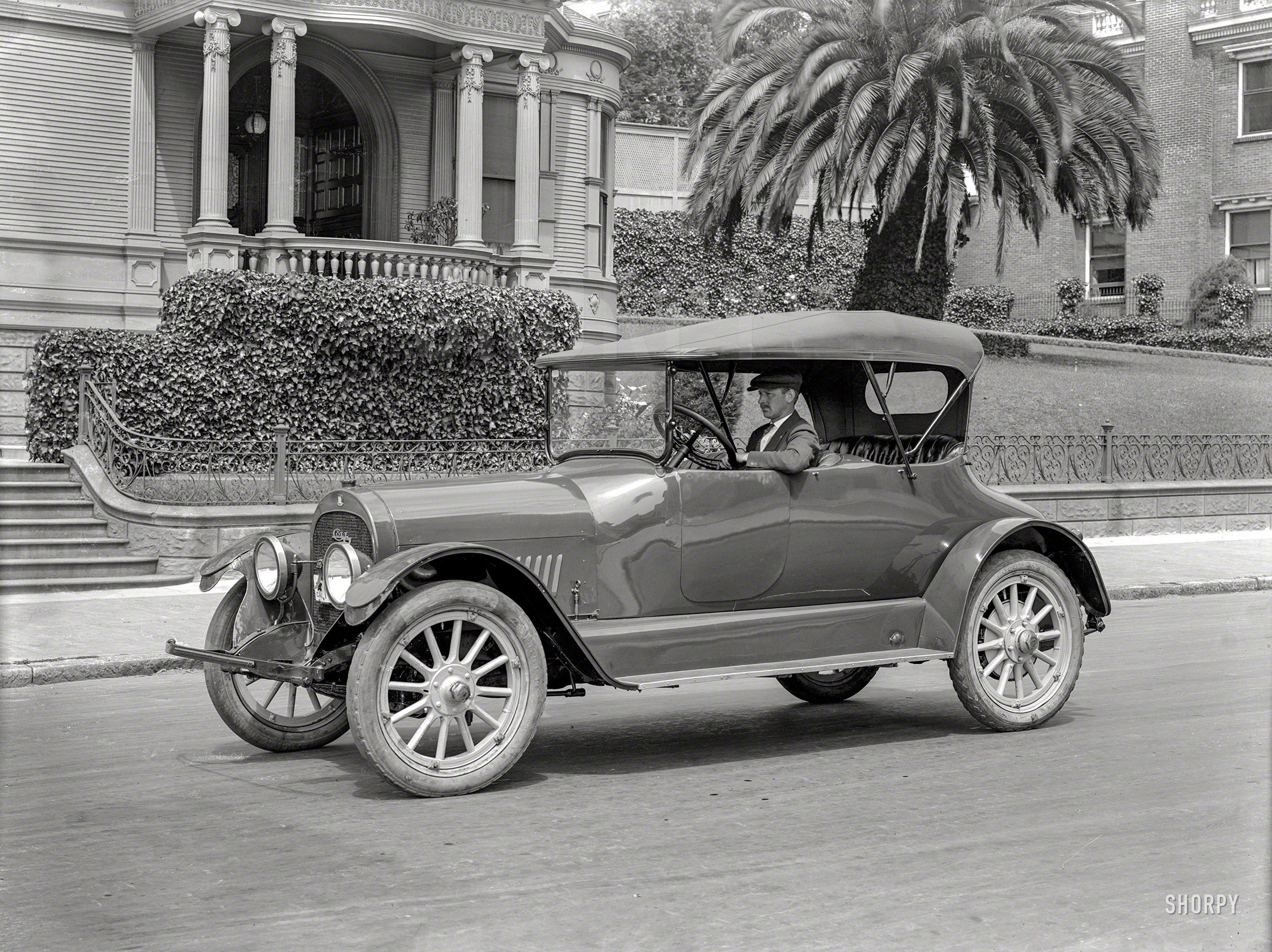
The easiest distinction being that the whole front of the Haynes is a frustrum - there’s no straight section of the hood then bulge at the firewall.
 RamblinRover Luxury-Yacht
> ttyymmnn
RamblinRover Luxury-Yacht
> ttyymmnn
09/21/2018 at 12:32 |
|
Incidental discovery - the Beardmore taxi of the 20s :
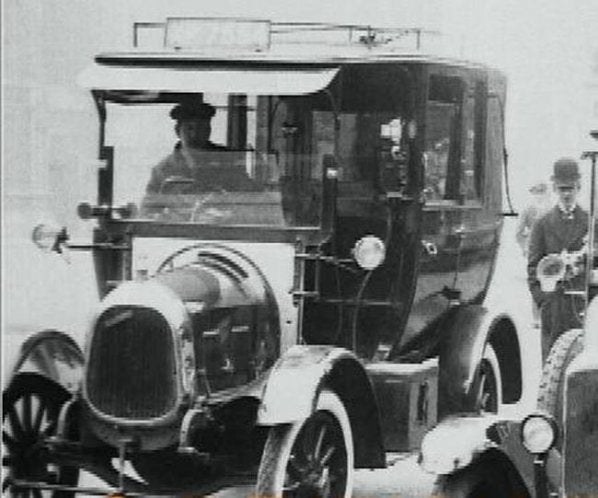
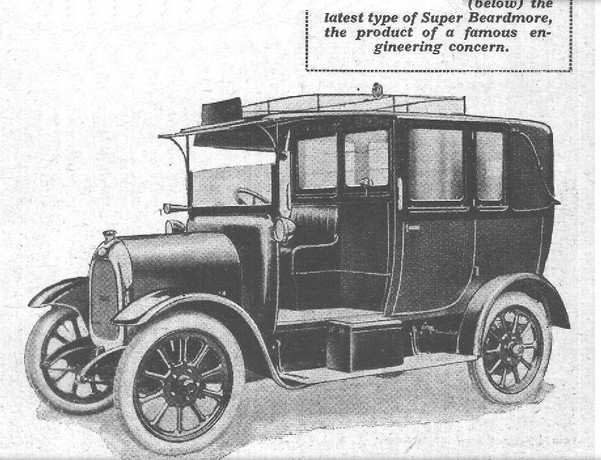
A goony-looking piece of hardware if I’ve ever seen one.
 ttyymmnn
> RamblinRover Luxury-Yacht
ttyymmnn
> RamblinRover Luxury-Yacht
09/21/2018 at 12:34 |
|
Do you mean frustum ? That’s an entirely new word for me. Sounds more like a Sniglet. I would imagine that such construction would be considerably more time consuming, though the result is much more attractive.
 ttyymmnn
> RamblinRover Luxury-Yacht
ttyymmnn
> RamblinRover Luxury-Yacht
09/21/2018 at 12:34 |
|
You keep this up and you’re going to steal all of my material!
 RamblinRover Luxury-Yacht
> ttyymmnn
RamblinRover Luxury-Yacht
> ttyymmnn
09/21/2018 at 12:37 |
|
A
pologies, yes,
frustum.
 ttyymmnn
> RamblinRover Luxury-Yacht
ttyymmnn
> RamblinRover Luxury-Yacht
09/21/2018 at 12:38 |
|
I started typing it your way and my computer wouldn’t let me. But that’s not a definitive ruling, so I looked it up. Interesting word. Thanks.
 RamblinRover Luxury-Yacht
> ttyymmnn
RamblinRover Luxury-Yacht
> ttyymmnn
09/21/2018 at 12:40 |
|
Here’s a picture of a vehicle which, unlike the Beardmore, appears to exist only in pictures which are few and far between - the Premier 656 Cloverleaf Roadster of 1916:
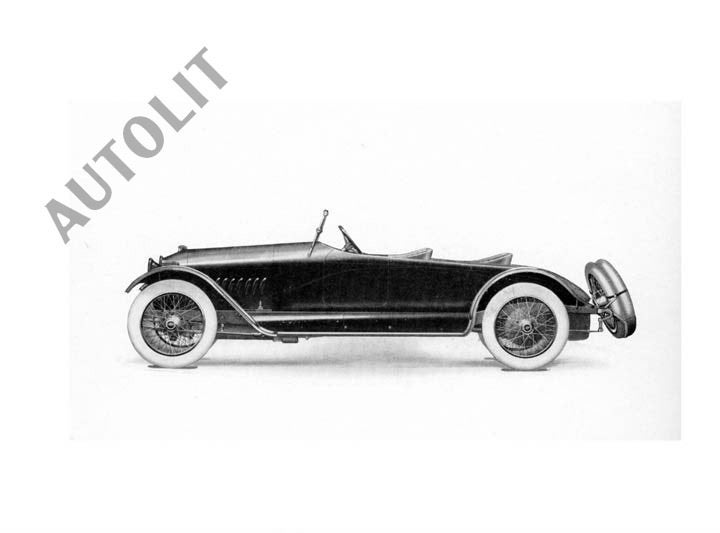
The two-seater roadster wasn’t any shorter:
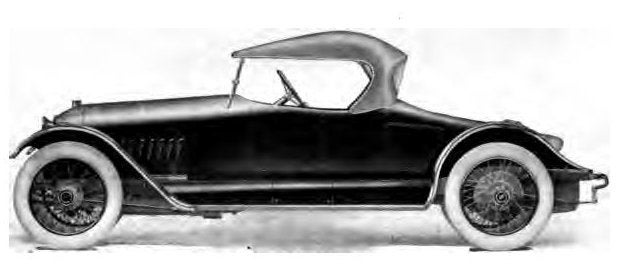
 RamblinRover Luxury-Yacht
> ttyymmnn
RamblinRover Luxury-Yacht
> ttyymmnn
09/21/2018 at 12:45 |
|
If creating such a shape in a solid modeling program, it’s usually referred to as a loft, because the process of “lofting” from one
profile to another is used
. /moreuselessinfo
 RamblinRover Luxury-Yacht
> ttyymmnn
RamblinRover Luxury-Yacht
> ttyymmnn
09/21/2018 at 12:48 |
|
More “ things that sound insane , because era of experimentation”:
The first was by a “Norwegian engineer” and used two three-cylinder radial engines on the rear axle, one powering each wheel.
The second was by James Yeikichi Sakuyama, for years an engine designer at Indianapolis, with a V-3 engine, gearbox and cast grid steam generator.
 fintail
> ttyymmnn
fintail
> ttyymmnn
09/21/2018 at 13:12 |
|
Ramblin Rover can have it :)
 fintail
> RamblinRover Luxury-Yacht
fintail
> RamblinRover Luxury-Yacht
09/21/2018 at 13:14 |
|
I was thinking it was a Cole before I zoomed in on the hubcap. Nice catch.
 ttyymmnn
> fintail
ttyymmnn
> fintail
09/21/2018 at 13:46 |
|
So, what was the big hint you saw?
 fintail
> ttyymmnn
fintail
> ttyymmnn
09/21/2018 at 13:48 |
|
hubcap, specifically at rear
 ttyymmnn
> fintail
ttyymmnn
> fintail
09/21/2018 at 13:54 |
|
You must have looked at it before I blurred it out. I didn’t think to do that at first. I will be more careful next time!
 facw
> ttyymmnn
facw
> ttyymmnn
09/21/2018 at 16:11 |
|
Torch did a story on that particular bit of cinema:
!!! UNKNOWN CONTENT TYPE !!!
 ttyymmnn
> facw
ttyymmnn
> facw
09/21/2018 at 16:14 |
|
The film is public domain. You can watch it in its bawdy entirety on Wikipedia. Don’t ask me how I knew that....
 fintail
> ttyymmnn
fintail
> ttyymmnn
09/21/2018 at 22:11 |
|
I feel like I am cheating if I do that, so I refrained from commenting further.
Cars of this era are much more difficult than ones a decade later, at least for me.
 ttyymmnn
> fintail
ttyymmnn
> fintail
09/21/2018 at 23:45 |
|
Well, I know nothing about cars of this era. So I’m learning here.
 fintail
> ttyymmnn
fintail
> ttyymmnn
09/22/2018 at 11:22 |
|
It gets a lot easier around 1930 - the herd had thinned a bit, and cars started developing corporate design themes - easy to tell a Ford from a GM from a Mopar from independents by the early 30s just from a side profile with no grille or emblems visible . In the 20s, the clue is often just a unique body or radiator shell, many everyday cars were very similar.